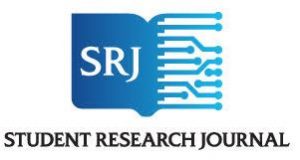Publication analysis
About the publication
Title: Journal of Radical Librarianship
ISSN: 2399-956X
Website: http://journal.radicallibrarianship.org/index.php/journal/index
Purpose, objective, or mission: The Journal of Radical Librarianship “is an open access journal publishing high quality, rigorously reviewed and innovative scholarly work in the field of radical librarianship….The scope of the journal is any work that contributes to a discourse around critical library and information theory and practice.”1
Target audience: Librarians and library and information science (LIS) practitioners, managers, scholars, and students who are interested in “radical librarianship,” loosely defined for the purposes of the journal as “the ethical roots of librarianship.”2
Publisher: The journal is self-published by the editors.3 Its platform and workflow are supported by OJS/PKP.4
Peer reviewed? Yes, the journal has a policy for manuscripts to undergo either open or double-blind review.5
Type: LIS scholarly journal.
Medium: Online and open access.
Content: The Journal of Radical Librarianship publishes LIS articles on a broad range of topics but emphasizes that articles should contribute “to a discourse around critical library and information theory and practice.”6 Sections include Research Articles, Editorials and Commentary, and Reviews. The journal’s Announcements page issues calls for proposals and papers on specified topics; a 2018 call was for proposals offering a “structural critique of race and power in LIS.” 7
Frequency of publication: The Journal of Radical Librarianship is published on a continual basis: articles are published as soon as they are ready under the year’s volume number.8
About the publication’s submission guidelines
Location of submission guidelines: Submissions.
Types of contributions accepted: The Journal of Radical Librarianship publishes research and scholarly articles that offer critical analyses of “the influence of neoliberal policy on the profession.”9 With this basis in critical LIS theory and practice, the journal covers many “traditional” topics, such as information literacy, digital rights, cataloging, and technology, but also brings nondominant discourses to the field, with topics including including politics and social justice; anti-racist theory, critical race analysis, anti-colonial studies; equity, diversity, and inclusion; gender variance, queer theory, and phenomenology; the political economy of information and knowledge; critical pedagogy; and sustainability and environmentalism.10 The editors will also consider nontextual formats.11
Submission and review process: Authors submit manuscripts online and must ensure compliance with the Submission Preparation Checklist. “Prospective authors are welcome to send outlines or drafts to the editor in advance of making a formal submission. Submissions can be sent throughout the year. Revisions may be required before a decision is made to accept or reject the paper.”12 The journal gives authors and reviewers the option of open or double-blind peer review. The authors and reviewers must all agree to an open review; if not, the manuscript undergoes double-blind review.13
Editorial tone: The tone is scholarly but appropriate for the topic and type of submission.
Style guide used: “Manuscripts should be prepared according to any consistent bibliographic style.”14
Conclusion: Evaluation of publication’s potential for LIS authors
The Journal of Radical Librarianship is a fairly new journal (first published in 2015) that is based in the UK but has an international scope and seeks contributions from “library and information workers, researchers, and academics from anywhere in the world.”15 LIS authors, including graduate students, who are writing critically about LIS theory, research, and practices, especially in ways that engage in nondominant discourses, consider a progressive point of view, and disrupt neoliberal library policy, will find encouraging and supportive editors and a high-quality, relevant journal.
Audience analysis
About the publication’s readers
Publication circulation: Data not available.
Audience location and language or cultural considerations: The Journal of Radical Librarianship is based in the UK and North America and is written in English, but the journal’s scope is international and the editors hope to find “editors and authors from beyond the English-speaking world” as the journal grows and evolves.16 Authors should consider an international audience for their articles and explain jargon or region-specific practices accordingly.
Reader characteristics: Readers are librarians and LIS professionals, scholars, researchers, and students from around the world in all types of libraries and information organizations. Further, readers may be members of the Radical Librarianship Collective, which is an organization “building solidarity for those critical of the marketization of libraries and commodification of information.”17
Knowledge of LIS subject matter: Readers have a solid academic and practical knowledge of LIS subject matter.
Conclusion: Analysis of reader characteristics and their potential impact on authors
Authors should keep in mind that readers expect authors to approach LIS scholarship with a consideration of critical, radical, and nonhegemonic analyses. Readers will expect traditional LIS topics to be analysed and critiqued from new, radical, or nondominant points of view, and they expect writing on newer topics crucial to the profession’s progressive advancement and a disruption of its neoliberal and market-based practices.
Last updated: April 20, 2018

